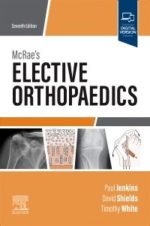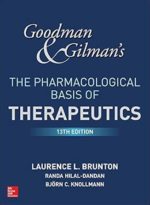This manual covers the full range of communicable diseases in the African region: skin infections, malaria and other vector-borne diseases, infections transmitted via contaminated food and water, tuberculosis and leprosy, diseases transmitted through animals, haemorrhagic fevers and severe acute respiratory illnesses. In this new edition HIV/AIDS has been covered as a chapter on its own. The authors have also included a new chapter titled Emerging and Re-emerging infections in which diseases such as Rift valley fever, Avian flu and Ebola have been discussed. The target for this book include students in medical training colleges, community health workers, nurses, clinical officers, public health officers, teachers of health workers and indeed all who are interested in and who want to learn about communicable diseases in Africa.
COMMUNICABLE DISEASES 4th edition
KSh 3,000.00
This manual covers the full range of communicable diseases in the African region: skin infections, malaria and other vector-borne diseases, infections transmitted via contaminated food and water, tuberculosis and leprosy, diseases transmitted through animals, haemorrhagic fevers and severe acute respiratory illnesses. In this new edition HIV/AIDS has been covered as a chapter on its own. The authors have also included a new chapter titled Emerging and Re-emerging infections in which diseases such as Rift valley fever, Avian flu and Ebola have been discussed. The target for this book include students in medical training colleges, community health workers, nurses, clinical officers, public health officers, teachers of health workers and indeed all who are interested in and who want to learn about communicable diseases in Africa.
Related products
-
Modern Blood Banking & Transfusion Practices Seventh Edition
KSh 12,460.00Join the generations of students who have embarked on successful careers with a firm foundation in the theory and practice of blood banking and transfusion practices. Denise Harmening’s classic text teaches you not only how to perform must-know tests and tasks, but to understand the scientific principles behind them.
You’ll begin with a review of the basic concepts of red blood cell and platelet preservation, genetics, immunology, and molecular biology. Then you’ll move to the hows and whys of clinical practice. And, you’ll be prepared for new advances in the field.
-
Workbook and Lab Manual for Sonography, 5th Edition
KSh 15,832.00Workbook for Sonography: Introduction to Normal Structure and Function, 5th Edition. This well-constructed review tool supports and completes the main text by providing an excellent introduction to sonography while preparing users to accurately identify sonographic pathology and abnormalities. Each workbook chapter opens with review questions on material from the corresponding chapter in the main text. Review questions are followed by drawings from the text — with parallel sonograms where appropriate — that include leader lines to label structures, but not the labels themselves. Workbook users will fill in the labels to identify structures in the drawings and sonograms, reinforcing visual and auditory learning from the text. Answers can be looked up in both the workbook appendix and by comparing the workbook figures to the labeled figures in the main text.
-
Nursing Foundation: Concepts and Perspectives
KSh 6,580.00The book under title ‘Nursing Foundation: Concepts and Perspectives’ has been written in lucid style, simple language and with goal-oriented outlook. It will help the students of undergraduate nursing programme at the post basic level which is a broad based education within an academic framework, to develop understanding of philosophy, objectives, responsibilities of nursing profession; to build upon the skills and competence acquired at the diploma level. It will orient them to the current concepts involved in practice of nursing and developments in nursing profession; direct to upgrade their critical thinking skills, competencies and standards required for practice of professional nursing and to follow nursing process. This book provides up-to-date information in accordance with the latest syllabus prescribed to them and they will be able to identify professional, ethical, and legal aspects of nursing profession, current trends in health and nursing and steps of nursing process. Each chapter deals with a specific aspect of foundation of nursing with complete clarity of expression, simplicity to exposition, intensive text and adequate illustrative material in the form of diagrams, flow charts and tables followed by key points, chapter end questions comprising of essay type questions, short answer questions and multiple choice questions at the end of each chapter. The chapters have been sequenced to facilitate ease and continuity in reading and understanding, and at the end of each chapter, related references have been given as suggested reading.
-
Pocket book of hospital care for children
KSh 3,640.00This is the second edition of the Pocket book of hospital care for children. It is for use by doctors, nurses and other health workers who are responsible for the care of young children at the first level referral hospitals. The Pocket Book is one of a series of documents and tools that support the Integrated Management of Childhood Illness (IMCI). It is an update of the 2005 edition, and presents up-to-date evidence based clinical guidelines from several recently updated and published WHO guidelines and recommendations. The guidelines are for use in both inpatient and outpatient care in hospitals with basic laboratory facilities and essential medicines. These guidelines focus on the management of the major causes of childhood mortality in most developing countries, such as newborn problems, pneumonia, diarrhoea, malaria, meningitis, septicaemia, measles and related conditions, severe acute malnutrition and paediatric HIV/AIDS. It also covers common procedures, patient monitoring and supportive care on the wards and some common surgical conditions that can be managed in small hospitals.
Details of the evidence on which the Pocket Book is based can be found on the WHO website from the relevant published guidelines provided in the bibliography. This bedside paediatric care guidelines are applicable in most areas of the world and may be adapted to suit country specific circumstances. However, advanced and high care treatment options, such as intensive care or mechanical ventilation, are not described. The Pocket Book is also available in hard copies although the online version will be updated regularly as new evidence emerges.
-
McRae’s Elective Orthopaedics, 7th Edition
KSh 11,000.00This new must-have text is a companion to McRae’s Orthopaedic Trauma and Emergency Fracture Management, extending this much-loved family of reference guides to cover the entire range of modern orthopaedic trauma and elective practice.
McRae’s Elective Orthopaedics is both an examination manual and a text on orthopaedic pathology. It offers a unique combination of subject matter and instructive illustrations in the tradition original author, Ronald McRae, to convey economically and effectively essential information for examination and management of the orthopaedic patient.
This book is organised into two parts. The first covers the relevant applied clinical sciences, and the second adopts a regional approach to the description of individual diseases and their non-operative or operative management. It is suitable for junior orthopaedic surgical trainees as well as other health professionals who encounter patients with musculoskeletal illnesses.
Key Features-
- Internationally respected textbook that provides in-depth knowledge across a breadth of conditions
-
- More than 140 new illustrations present essential information in a unique ‘picture book’ style
-
- Concise and accessible – perfect for orthopaedic surgical trainees
-
- Practical tips, clinical examination pearls and surgical techniques – ideal for use on the wards
-
- Learning enhanced with anatomical illustrations, diagrams, radiographic imaging and clinical photos, accompanied by descriptions of the background to each condition
-
- Updated to include modern investigation and management
-
-
Handbook of Health Research Methods: Investigation, Measurement and Analysis 1st Edition
KSh 7,278.00This handbook helps researchers to plan, carry out, and analyse health research, and evaluate the quality of research studies. The book takes a multidisciplinary approach to enable researchers from different disciplines to work side-by-side in the investigation of population health, the evaluation of health care, and in health care delivery.
Handbook of Health Research Methods is an essential tool for researchers and postgraduate students taking masters courses, or undertaking doctoral programmes, in health services evaluation, health sciences, health management, public health, nursing, sociology, socio-biology, medicine and epidemiology. However, the book also appeals to health professionals who wish to broaden their knowledge of research methods in order to make effective policy and practice decisions.
Contributors: Joy Adamson, Geraldine Barrett, Jane P. Biddulph, Ann Bowling, Sara Brookes, Jackie Brown, Simon Carter, Michel P. Coleman, Paul Cullinan, George Davey Smith, Paul Dieppe, Jenny Donovan, Craig Duncan, Shah Ebrahim, Vikki Entwistle, Clare Harries, Lesley Henderson, Kelvyn Jones, Olga Kostopoulou, Sarah J. Lewis, Richard Martin, Martin McKee, Graham Moon, Ellen Nolte, Alan O’Rourke, Ann Oakley, Tim Peters, Tina Ramkalawan, Caroline Sanders, Mary Shaw, Andrew Steptoe, Jonathan Sterne, Anne Stiggelbout, S.V. Subramanian, Kate Tilling, Liz Twigg, Suzanne Wait.
-
Ross and Wilson;Anatomy and Physiology in Health and Illness. International Edition, 14th Edition
KSh 8,000.00Now in its fourteenth edition, this best-selling textbook has been honed over many years to provide a clear, straightforward introduction to the human body for students of nursing, allied health or biomedical and paramedical science.
The book covers the core essentials of anatomy and physiology, including basic pathology and pathophysiology of important diseases and disorders. This new edition presents additional illustrations to enhance understanding of key concepts, including pathophysiology and diagnostics. Included for the first time is an introduction to surface anatomy, while other updating reflects current scientific knowledge and developments, including coronavirus. Enhanced learning features and an extensive online resource help you grasp all the important areas.
Like millions of readers before you, you will treasure Ross & Wilson as a go-to resource that you will refer to time and again to support this critical aspect of your healthcare education.
Key Features-
- Clear and easy to read – suitable for students new to the area and anyone whose first language is not English
-
- Hundreds of stunning illustrations and images to make learning easy
-
- Helpful learning features such as Learning Outcomes boxes, colour coding and orientation icons to facilitate navigation
-
- Definitions of common prefixes, suffixes and roots, examples, glossary and an appendix of normal biological values
-
- Self-assessment activities in each chapter, including ‘spot check’ questions for each section and case studies with answers to develop understanding of key principles
- Accompanying website with animations, videos, audio-glossary and other self-assessment material
Evolve Study Resources
Online content offered with Ross & Wilson Anatomy and Physiology in Health and Illness 14th edition includes:
-
- New for this edition – a set of expert-narrated 3D videos summarizing key topics in the book, powered by Complete Anatomy: the world’s most advanced 3D anatomy platform
-
- Over 120 animations clarifying underlying principles and make learning fun
-
- More than 1700 audio glossary entries
-
- Body Spectrum © online colouring and self-test software
- Self-assessment questions to help students test their knowledge
Author InformationBy Anne Waugh, MSc CertEd SRN RNT FHEA, School of Acute and Continuing care Nursing, Napier University, Edinburgh, UK and Allison Grant, BSc PhD RGN, Department of Biological and Biomedical Sciences, Glasgow Caledonian University, Glasgow, UK -
-
Goodman and Gilman’s The Pharmacological Basis of Therapeutics, 13th Edition
KSh 19,028.00Goodman & Gilman’s: The Pharmacological Basis of Therapeutics, Thirteenth Edition represents the pinnacle of authority and accuracy in describing the actions and uses of therapeutic agents in relation to physiology and pathophysiology. Goodman & Gilman’s careful balance of basic science and clinical application has guided thousands of practitioners and students to a clear understanding of the drugs essential to preventing, diagnosing, and treating disease.
The Thirteenth Edition includes more than 500 color illustrations, with many new figures emphasizing mechanisms of drug action. More than 30 new contributors have added to this edition, while the focus on basic principles is undiminished.










Be the first to review “COMMUNICABLE DISEASES 4th edition”